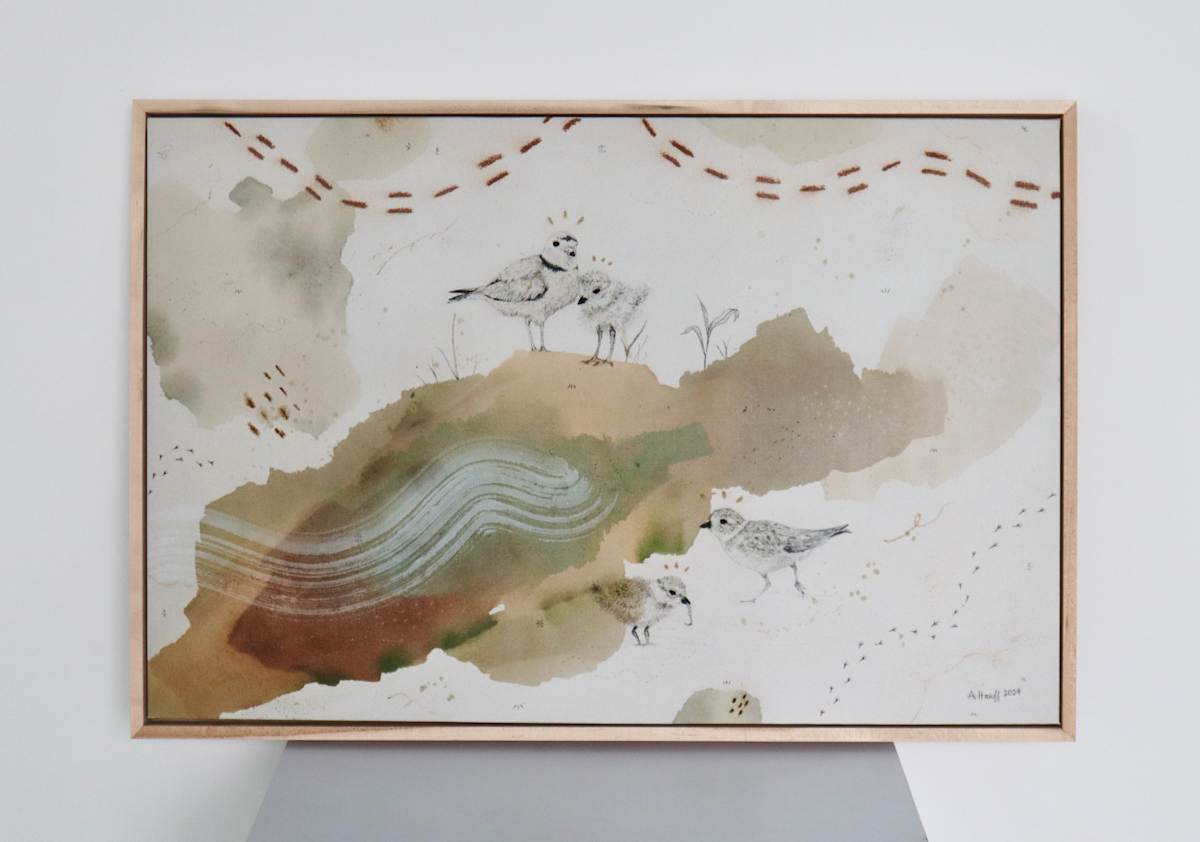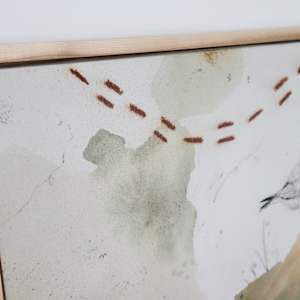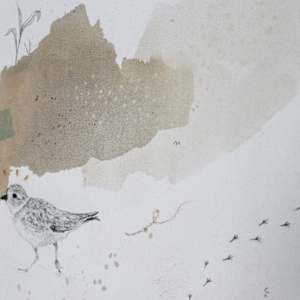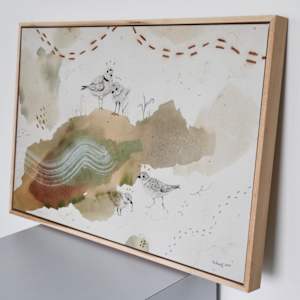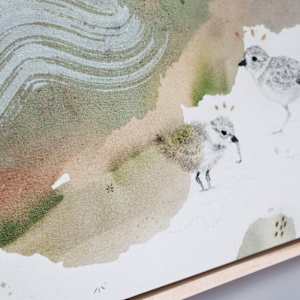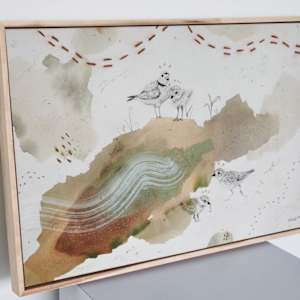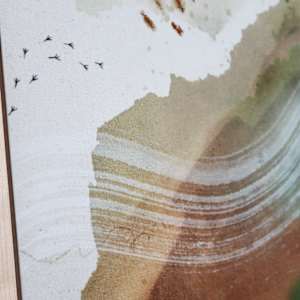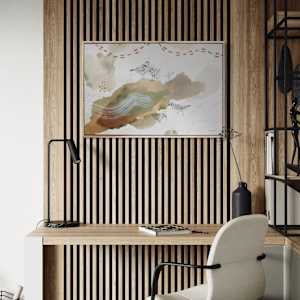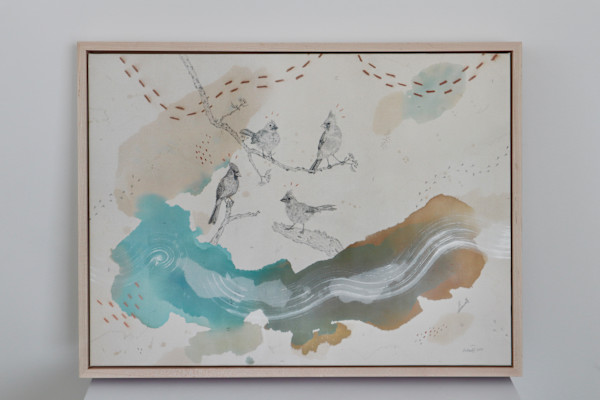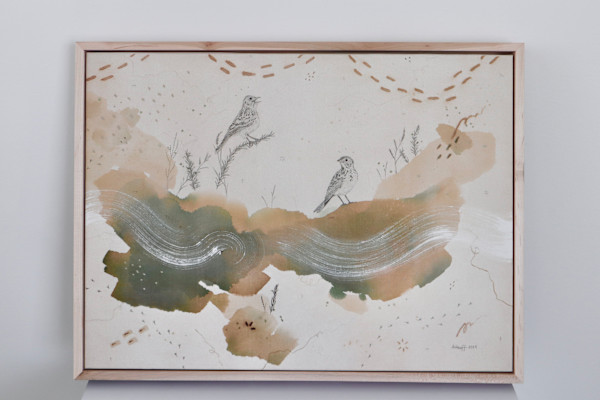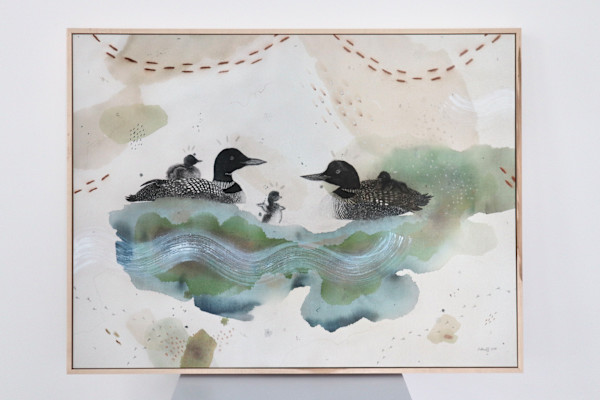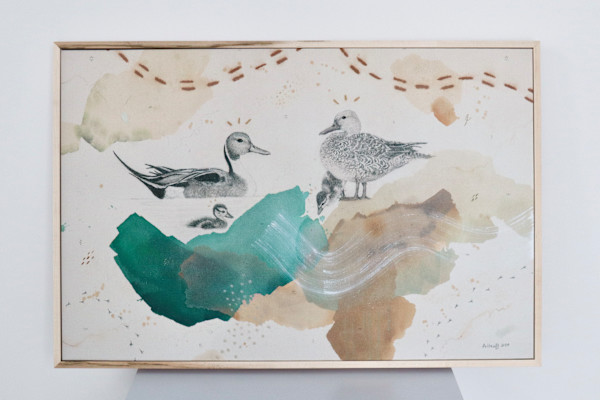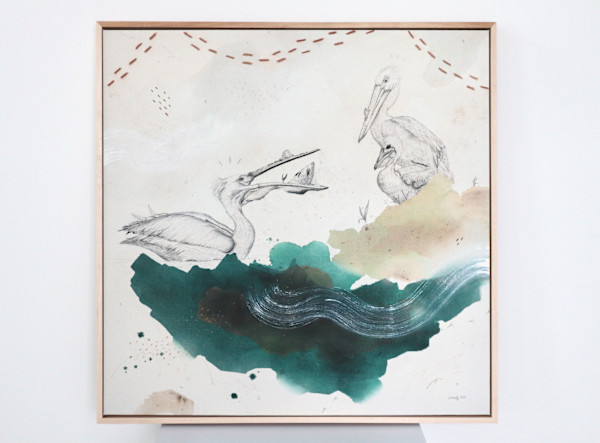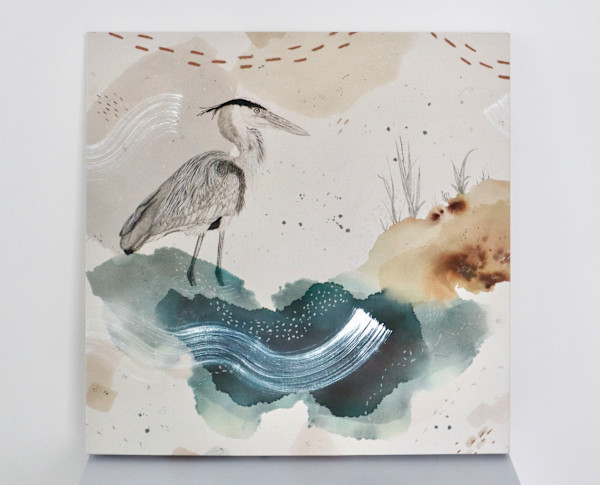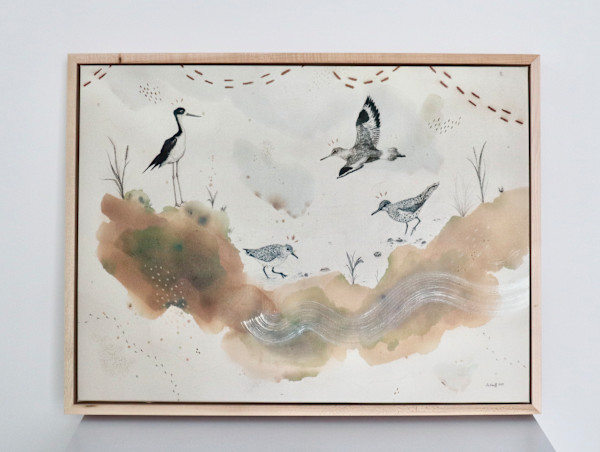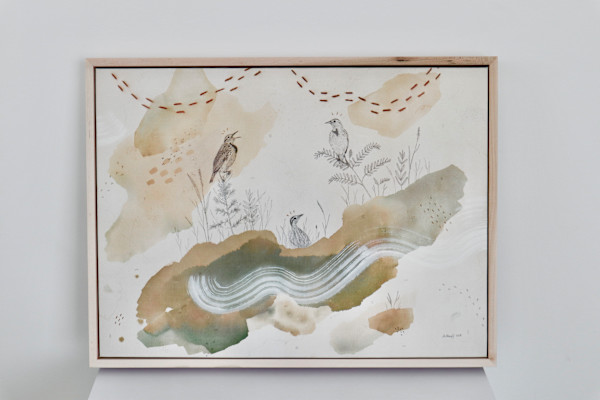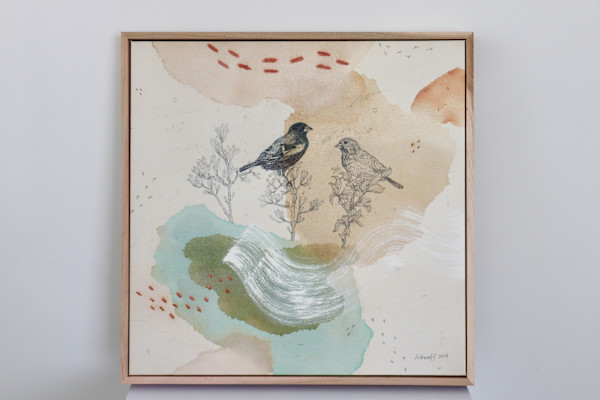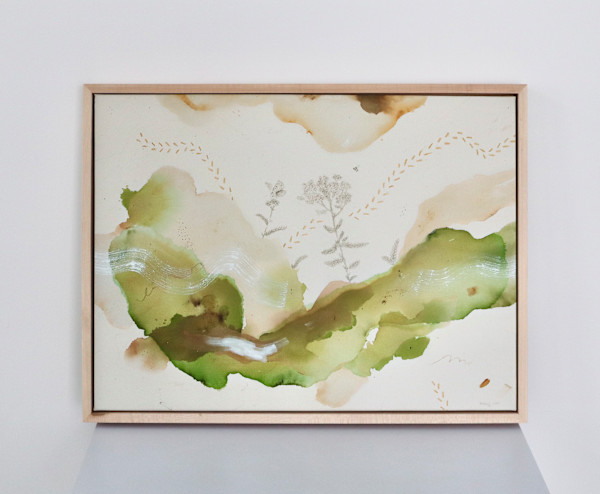This round, big-eyed little shorebird is hard to spot–until they scurry down the shoreline or you hear a ‘peep-lo.’ They blend in perfectly with their sandy-grey backs. Piping Plover is almost purely a North American shorebird, inhabiting the Great Plains into mid-Canada, Great Lakes, and Atlantic shores. Diet includes marine worms, water insects, and crustaceans. They run for a bit and stop, kick up sand with one foot forward to entice creatures to come to the surface.
Despite traveling hundreds of miles between wintering and breeding sites, many Piping Plovers return to the same sites to breed and spend the winter. Individuals who return to breed with the same mate often nest within 128 feet of the previous nest site. They nest in open sandy areas near the shoreline where human disturbance is likely. Males establish territories soon after arrival and court females by tipping side to side in flight with deep and slow wingbeats above their territories. On the ground, males toss shells and pebbles aside and kick away sand to form a small depression that may be the future nest site. They also tilt their bodies, spread their wings, and fan their tails in front of a female.
Both parents take turns incubating and defending the nest site, performing a broken-wing display to lead predators away. After hatching, downy chicks will snuggle under their bellies. Mated pairs are monogamous for at least the year, and some remain so for multiple years.
Conservationist groups have been raising awareness by marking off breeding grounds, public education, and closing off beaches if necessary. In the Great Lakes region they are federally listed as endangered, and federally threatened in the Great Plains and Atlantic region.
This is a matte giclee print made-to-order with archival inks.
Available in multiple sizes rolled, stretched, or stretched and framed in hardwood.
- Subject Matter: shorebirds/waterfowl
- Collections: Fine Art Canvas Prints

